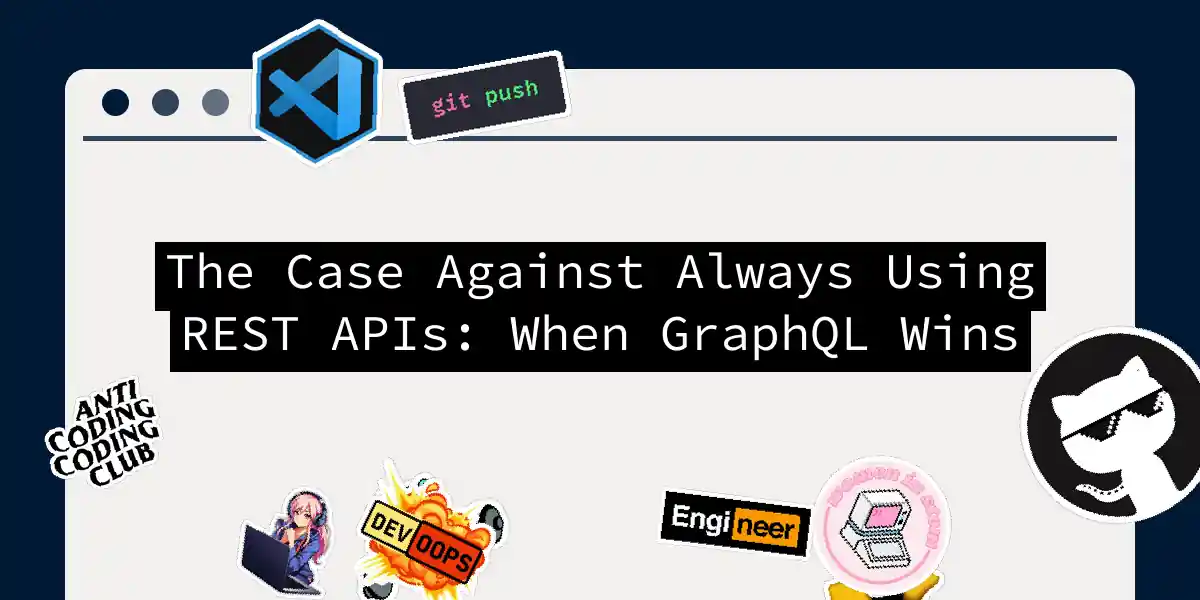The REST of the Story: Why GraphQL Might Be the Hero You Need
In the world of API design, REST (Representational State of Resource) has long been the reigning champion, the go-to choice for developers building web services. However, like any champion, REST has its weaknesses, and that’s where GraphQL steps in as the challenger. In this article, we’ll delve into the scenarios where GraphQL not only holds its ground but also outshines REST, making it the better choice for many modern applications.
The Usability Conundrum
When it comes to usability, GraphQL often takes the cake. Imagine you’re at a restaurant, and you order a burger. With REST, it’s like ordering from a fixed menu where you get everything on the plate, whether you want it or not. You ask for the burger, but you also get the fries, salad, and a side of coleslaw, even if you’re not hungry for all that. This is what happens with REST APIs – you make a request to an endpoint, and you get a predefined set of data, which can lead to over-fetching or under-fetching.
With GraphQL, you can specify exactly what you want. If you only need the name of the burger, your query would look something like this:
{
burgers {
name
}
}
This approach ensures you get only the data you need, making your application more efficient and reducing the amount of data transferred over the network.
Performance: The Speed Demon
Performance is another area where GraphQL excels. In REST, each request to an endpoint can result in multiple network calls, especially if the data you need is spread across several resources. This can lead to a slower user experience due to the increased latency.
GraphQL, on the other hand, allows you to fetch all the necessary data in a single request. This reduces the number of network calls and makes your application faster and more responsive.
Data Fetching: The Precision Game
Data fetching is where GraphQL really shines. With REST, you’re limited to the endpoints defined by the server, which can lead to over-fetching or under-fetching. For instance, if you need only the names of users and the titles of posts, you might end up fetching entire user profiles and post details, including unnecessary fields.
GraphQL eliminates this issue by allowing clients to specify exactly what fields they need. Here’s an example of how you might fetch user names and post titles in GraphQL:
{
users {
name
}
posts {
title
}
}
This precision in data fetching not only reduces the amount of data transferred but also makes your application more efficient.
Versioning: The Never-Ending Story
Versioning is another pain point with REST APIs. Every time the server changes its data structure, you need to create a new endpoint or version of the API to avoid breaking existing clients. This can lead to a complex web of API versions, making maintenance a nightmare.
GraphQL simplifies this by allowing clients to specify their data requirements in the query. If new fields are added to the server, clients that don’t need those fields are unaffected. This makes versioning much less of an issue, as the server can evolve without disrupting existing clients.
Real-Time Updates: The Live Wire
Real-time updates are a feature where GraphQL stands out significantly. With REST, achieving real-time updates requires additional setup and configurations like long-polling or server-sent events, which can add complexity to your application.
GraphQL includes built-in support for real-time updates through subscriptions. Subscriptions allow the server to push updates to the client whenever specific events occur, making real-time communication seamless.
Error Handling: The Clear Winner
Error handling is another area where GraphQL offers a more elegant solution. In REST, errors are typically handled using HTTP status codes, which can sometimes be ambiguous or not very informative.
GraphQL, on the other hand, returns errors in the response body itself, making it easier to distinguish between transport errors and API errors. This approach provides more detailed and actionable error messages.
When to Choose GraphQL
So, when should you choose GraphQL over REST? Here are some scenarios where GraphQL is the clear winner:
- Complex and Changing Data Requirements: If your application has complex and frequently changing data requirements, GraphQL’s flexibility and dynamic schema make it an ideal choice.
- Microservices Architecture: In a microservices architecture, GraphQL can unify multiple services behind a single API, making inter-service communication easier and more efficient.
- Real-Time Updates: If your application requires real-time updates, GraphQL’s built-in subscription mechanism makes it the better choice.
- Legacy Infrastructure: When dealing with legacy infrastructure or third-party APIs that are difficult to maintain, GraphQL can help unify these systems and simplify data fetching.
Conclusion
While REST has been the standard for API design for a long time, GraphQL offers several advantages that make it a compelling alternative. From precision in data fetching to real-time updates and simplified versioning, GraphQL can significantly improve the performance and usability of your application.
So, the next time you’re designing an API, don’t automatically default to REST. Consider the unique needs of your application and see if GraphQL might be the hero you need to save the day.
